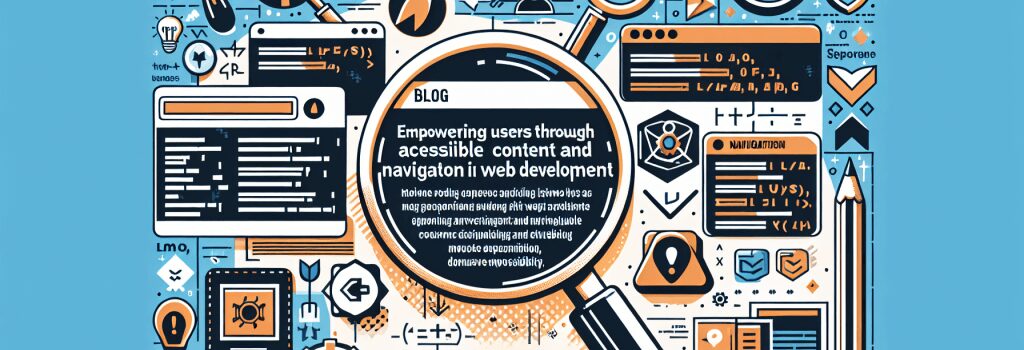Empowering Users through Accessible Content and Navigation in Web Development

Creating web applications and websites that are accessible and inclusive not only adheres to ethical standards but also expands your reach to a wider audience, including those with disabilities. By emphasizing accessible content and navigation in your web development process, you not only empower users but also enhance the overall user experience. This article discusses key strategies and best practices to ensure your web projects are accessible and user-friendly.
Understanding Web Accessibility
Web accessibility means that websites, tools, and technologies are designed and developed so that people with disabilities can use them. This includes ensuring that your content is accessible to people with a wide range of impairments, including visual, auditory, physical, speech, cognitive, and neurological disabilities.
Implementing Accessible Navigation
Providing Keyboard Navigability
Not all users can use a mouse or a touchscreen. Ensure your website can be navigated using a keyboard alone. This includes implementing tab order and ensuring all content and navigation elements are accessible via the keyboard.
Semantic HTML
Use semantic HTML5 elements such as ;<nav>>, ;<header>>, ;<footer>>, and ;<main>> to define the structure of your website. This helps assistive technologies understand your website’s layout, making it easier for users to navigate.
ARIA Roles and Landmarks
Accessible Rich Internet Applications (ARIA) roles and landmarks provide additional cues to assistive technologies about how to interact with web content. Use ARIA landmarks to define regions of the page (e.g., navigation, main content, and banners) and roles to describe the function of elements.
Enhancing Content Accessibility
Alt Text for Images
Ensure all images on your website have descriptive alt text. Alt text should accurately describe the image’s content or function, helping users who rely on screen readers understand the context and purpose of images.
Contrast and Color
Good contrast between your text and background is crucial for users with visual impairments. Avoid using color alone to convey information; instead, use text labels or patterns.
Text Size and Legibility
Use relative units (e.g., ems, rems) instead of absolute units (e.g., pixels) for text sizes, allowing users to adjust the text size based on their needs. Choose legible fonts and ensure adequate spacing between lines and paragraphs.
Accessible Forms
Forms are a crucial part of many websites. Label each form element clearly, provide instructions and feedback, and ensure that form validation is accessible. Use the ;<label>> element to associate text labels with form controls.
Captions and Transcripts
For multimedia content such as videos and audio, provide captions and transcripts. Captions allow users with hearing impairments to follow along, while transcripts ensure that the content is accessible to users who prefer or require text alternatives.
Testing for Accessibility
Testing your website for accessibility is key to ensuring that it meets accessibility standards. Use automated tools such as Lighthouse or axe to identify technical issues. However, remember that automated tests can’t catch everything. Manual testing, including using your website with a screen reader and keyboard navigation, is also crucial.
Conclusion
Empowering users through accessible content and navigation not only fulfills a legal and ethical obligation but also opens your web development projects to a broader audience. By implementing the practices outlined above, you can ensure that your website is usable and enjoyable for everyone. Remember, accessibility is an ongoing process, and continuous improvement and testing are vital to maintain and enhance accessibility over time.


